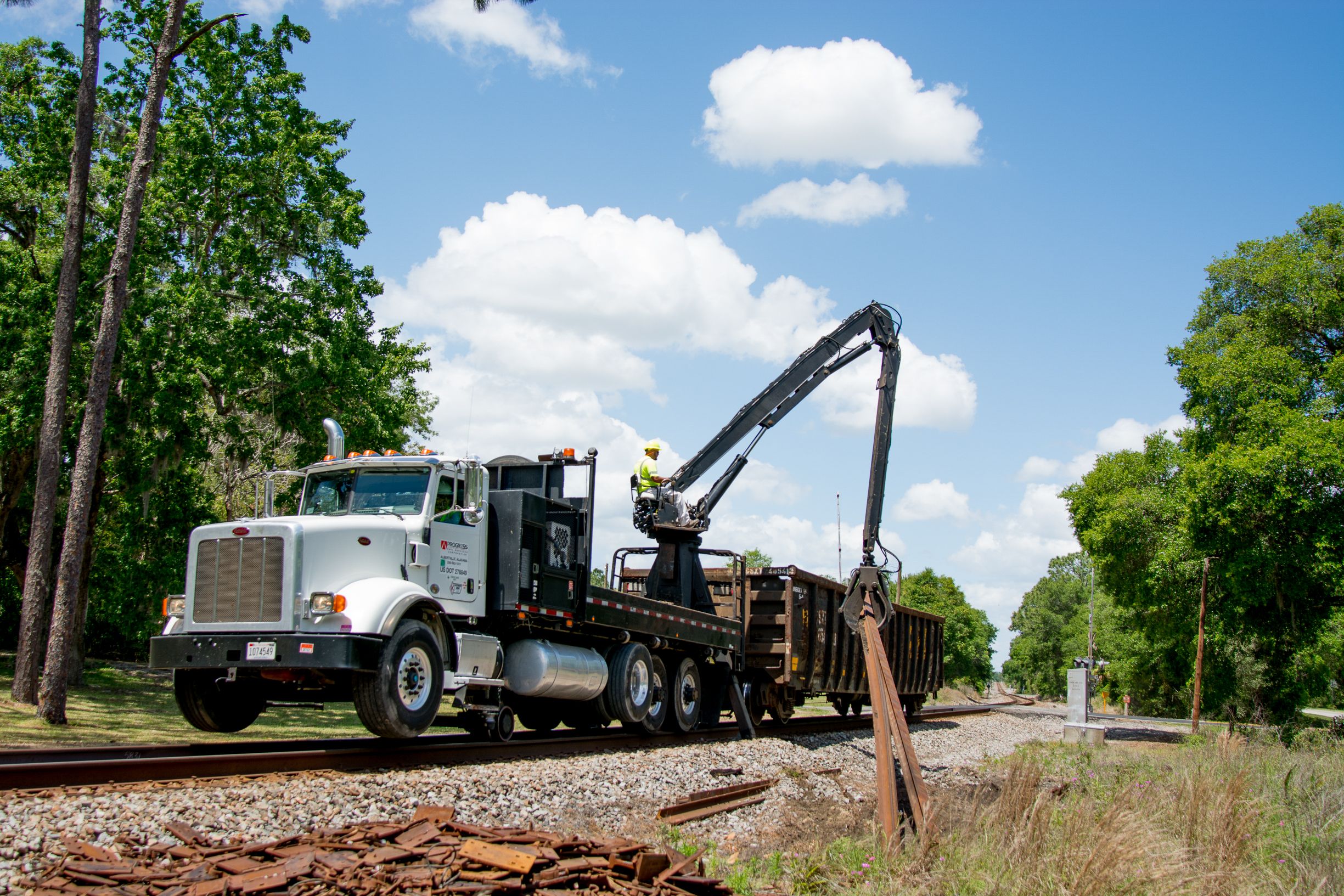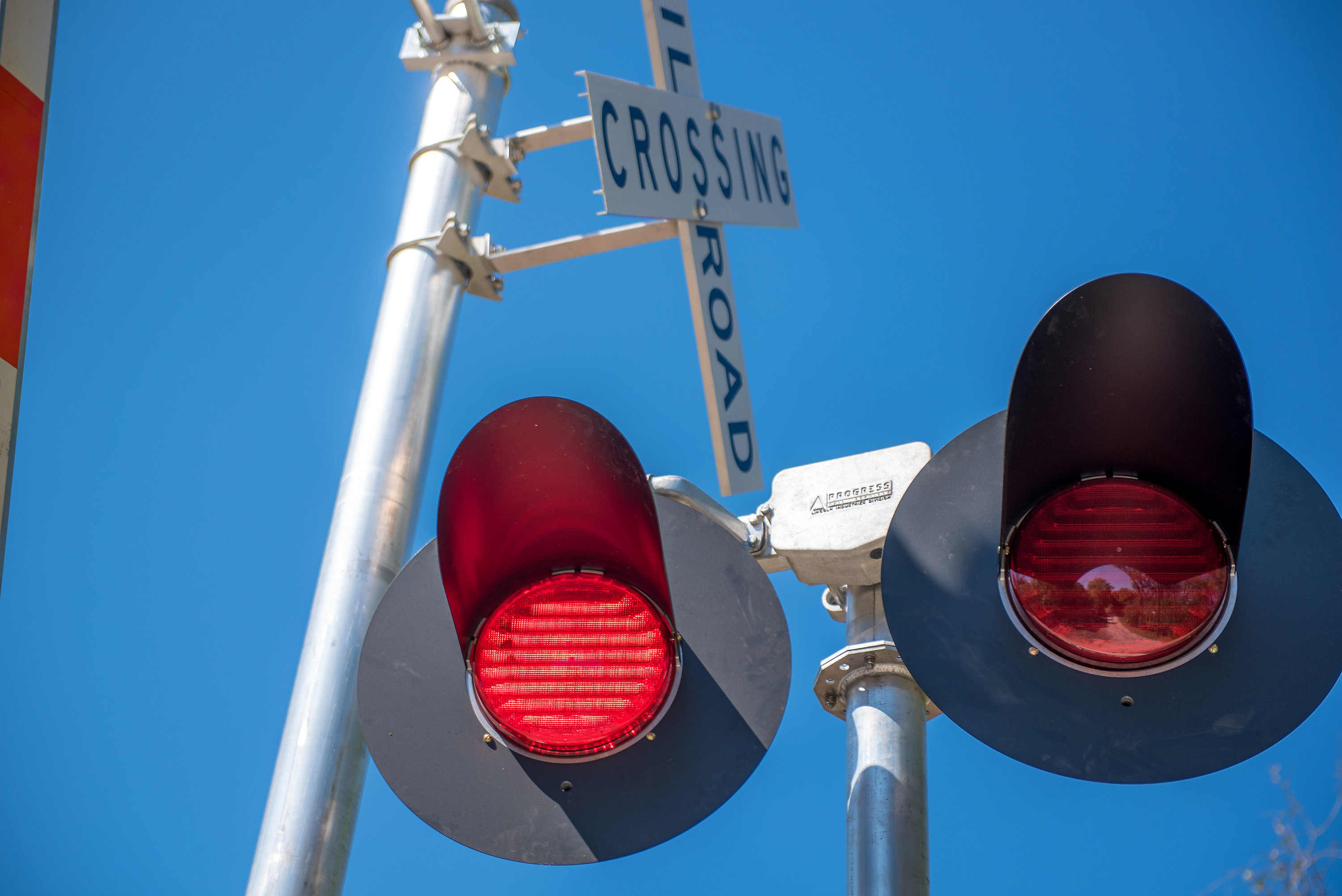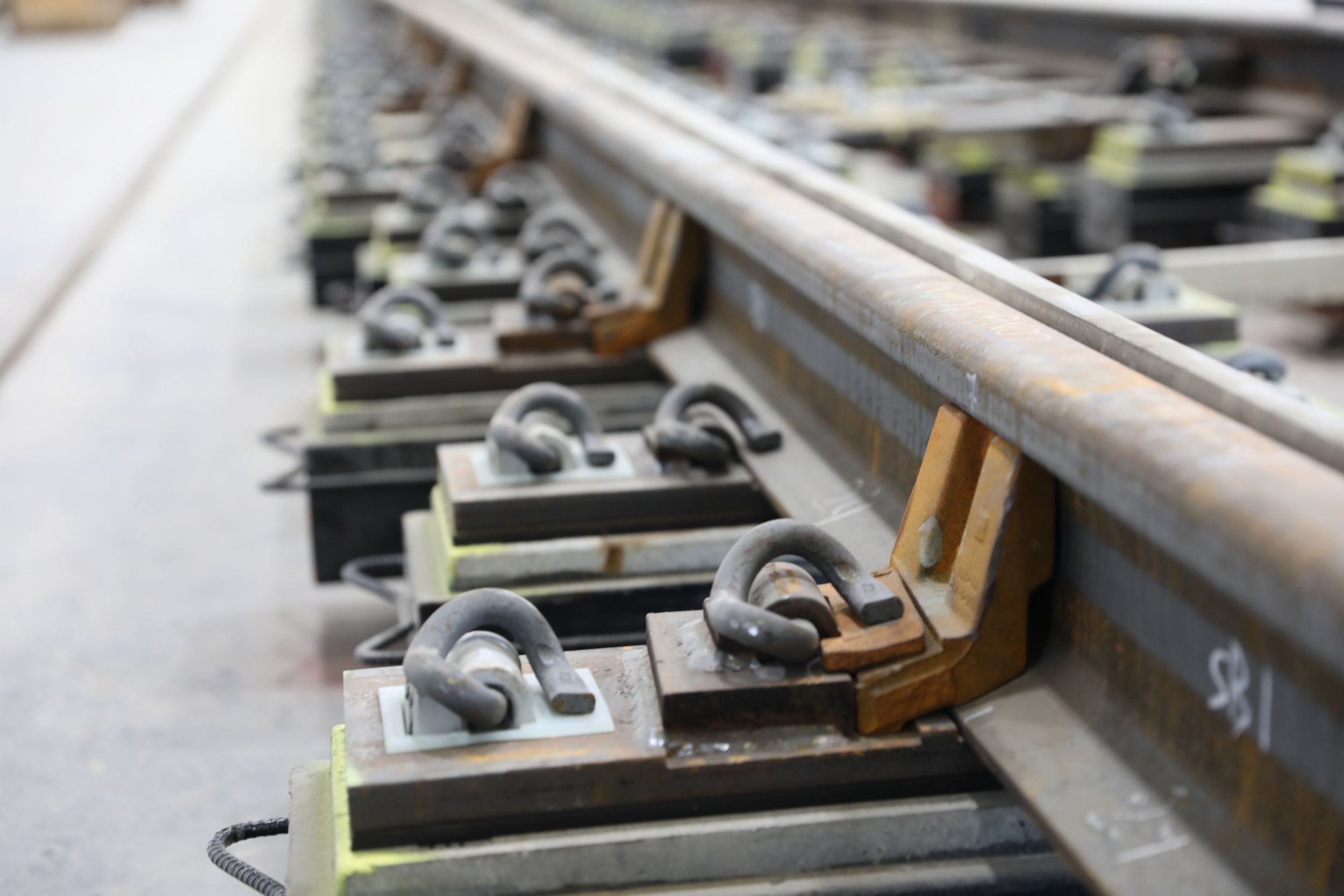The Egg is a vibration-attenuating track fastener, appropriate for direct fixation environments - at grade, aerial structures and tunnels. In service in the U.S. since 1983, the Egg owes its excellent acoustical performance and superior maintenance records to its unique design. Vertical forces are cushioned as rubber is placed in shear when the Egg deflects under load from passing trains. The Egg can now be found in installations across the U.S.
The Egg track fastener is specifically designed to reduce ground-borne vibration, the cause of secondary noise in buildings neighboring transit tracks. The Egg name is derived from its characteristic oval shape.
Egg-type fasteners consist of two metal components, the Top Plate and Frame, bonded together with elastomer. Ductile iron was selected as the best suited for all metal components for reasons of strength, endurance, corrosion resistance and economics. Except under unusual conditions, rubber is the elastomer of choice due to its superior spring performance and enduring life-time characteristics (i.e. dynamic stiffness).
The rail rests on the Top Plate which is oval. Its side surface is angled with respect to the vertical. There is a corresponding angled oval surface built into the outer containment Frame which supports the Top Plate and also houses the anchor bolt holes. The Top Plate is suspended on a belt of elastomer, bonding it to the mating angled surface of the Frame. This allows the Top Plate to “float” and geometry dictates that vertical forces be transmitted largely in shear and only partially in compression. This is perhaps the single most significant feature explaining the unique acoustical effectiveness of the Egg-type design.
Equally important, the geometry also provides “fail-safe” maintenance of track gauge. Thus, the Egg-type design creates the vital combination of lateral integrity and vertical softness. Reacting to overload, or the unlikely event of elastomer failure, the Top Plate sinks further and further into the “nest” provided by the Frame. As it does, lateral stability is not only maintained, but is increased - a huge safety benefit, particularly on curves.
The belt of elastomer separating the two metal components, not only dampens rail forces, but also provides excellent electrical isolation.
Vertical stiffness can be adjusted to customer preference by altering elastomer thickness and/or varying hardness. Typical static stiffnesses are in the range of 50,000 and 75,000 pounds per inch. Stiffness range is approximate. Contact us for more details.
DIMENSIONS
Body Length 17”
Body Width 9”
Width Across Anchor Bolt Flanges 12-15”
Rail Seat Elevation 2 3/4” (70mm)
Rail Base Width 5 1/2” (115# RE Rail)
Cant Available with no cant and 1:40 cant
WEIGHT
Body only 50 lbs
Gage adjustment clip 0.5 lbs
Pandrol “e” clip 1.7 lbs
Metal Parts Top Plate, Containment Frame and Gage Adjustment Clip are all ASTM 536, Grade 65-45-12 Ductile Iron Castings
Elastomer Natural Rubber
Assembly Metal parts fully bonded together with elastomer
Anchor Bolts 7/8” diameter bolts or studs meeting or exceeding ASTM A-325. Use lock washers in either case. If stud, nut should also meet or exceed A-325
Rail Clips Pandora “e”-2055 clips

West Director - Sales
Libertyville, IL
Phone: 224-545-0524
International Sales Director
Phone: +1-469-934-8284
Director, International Business Development
Phone: +44 (0) 7966 337924
Business Development Director, LATAM
Phone: +55 (31) 3779-6729
Cell: +55 11 96551-6068
PRS UK Sales Director
Phone: +44 (0) 114 2841 634
Mobile: +44 (0) 7808 897092
Infrastructure - Business Development Manager, Australia
Phone: +61 (0) 408 010 983
Office Phone: 256-505-6588
Cell Phone: 256-520-6249
Phone: 205-901-9931
Progress Rail’s trackwork experience and remanufacturing capabilities enable us to provide quality trackwork to your specifications. Whether you need new rail, recycled rail, Other Track Material (OTM), complete turnout packages or a single trackwork component, our facilities can fulfill your requirements.
Learn MoreProgress Rail has long been a signaling provider, designing wayside and highway crossing systems for railroads since 1992. Our signal engineering and asset protection are just some of the many ways we can help your business.
Learn MoreProgress Rail offers a full line of trackwork, components and fasteners for heavy haul and transit railways, and is a leading manufacturer of specialty trackwork in North America, the United Kingdom and Australia. With state-of-the-art manufacturing facilities located strategically around the globe, we produce the highest quality trackwork and fasteners, with 100-plus years of experience in the design and manufacture of cast manganese crossings.
Learn More






